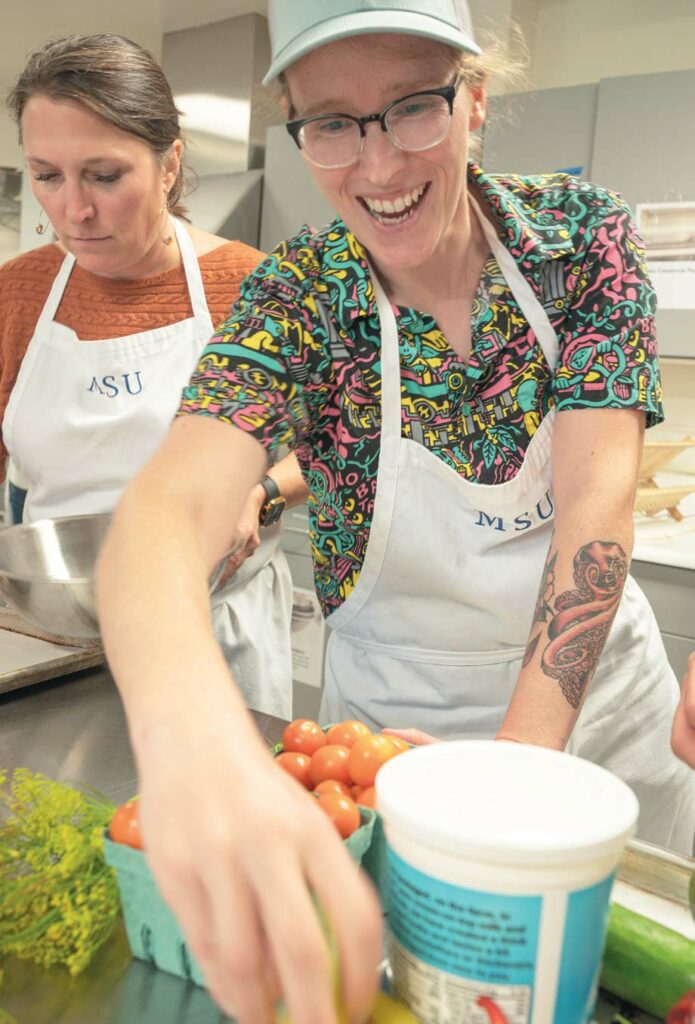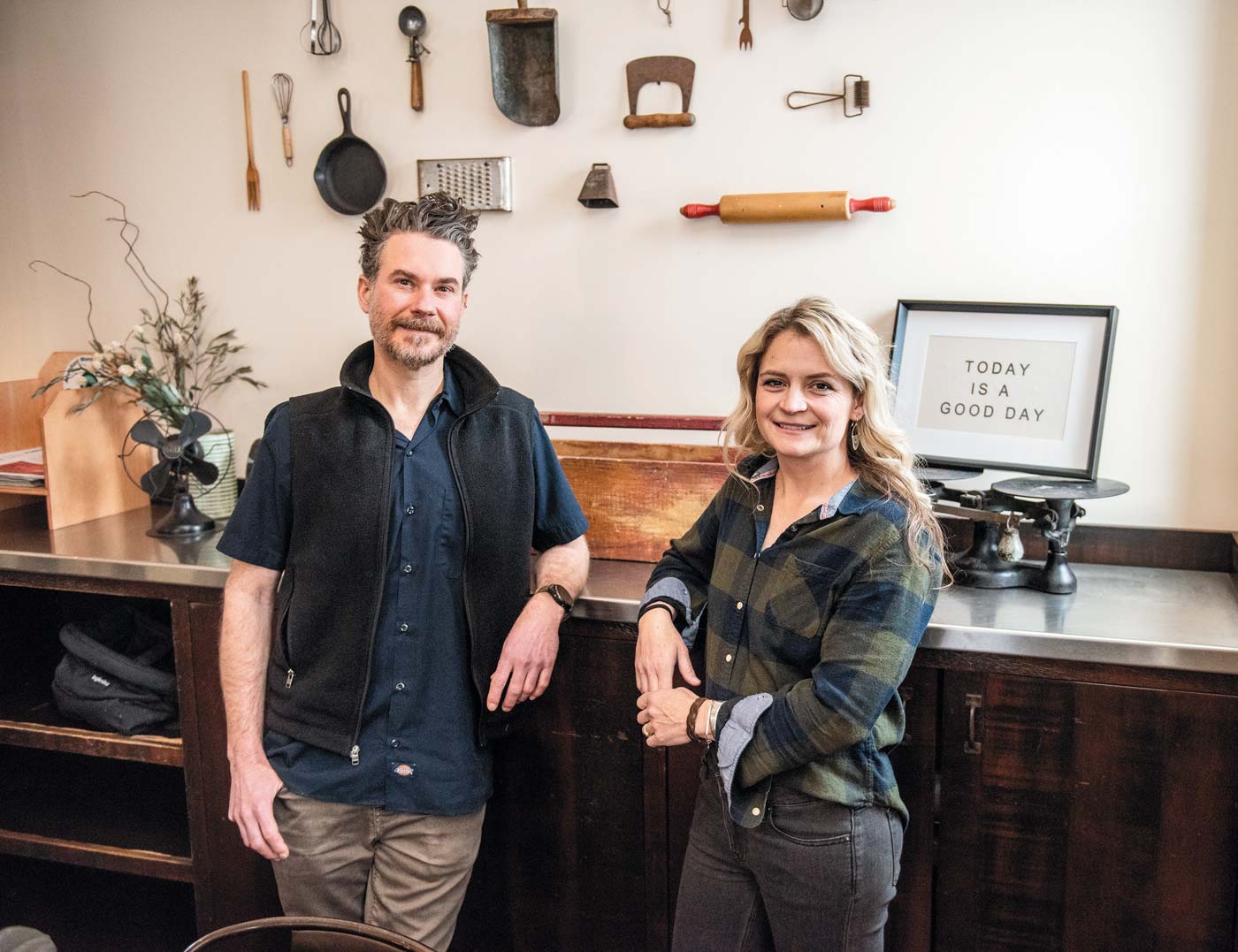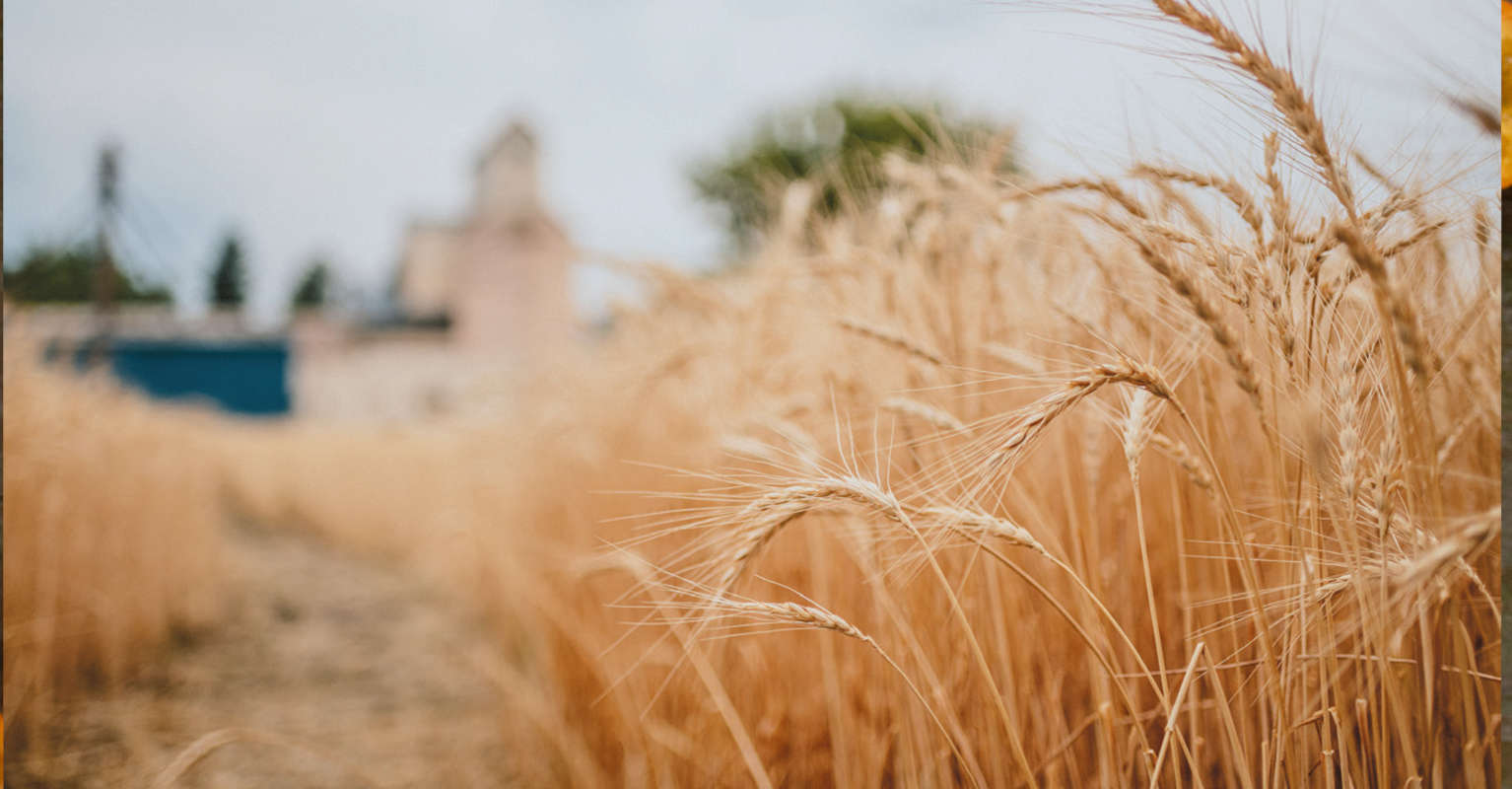Preparing MSU Healthcare Students for Holistic Patient Care
Donning white aprons, 20 students gather on the Montana State University campus to prepare a nutritious, shareable feast. Groups huddle over recipes, gather ingredients, and begin chopping. This might look like a classroom for culinary students, but those gathered are in degree programs for medicine, nursing, and dietetics.
Each session begins with a student-led lecture facilitated by nutrition students in the Montana Dietetic Internship program. The medical and nursing students learn from their peers about how gut health, the Mediterranean diet, and food systems planetary health contribute to the overall well-being of individuals. Following the lecture, students are divided into groups and given recipes related to the evening’s topic. The sound of laughter and clinking pans soon fills the kitchen.
“I like that this class is a break from our regular studies,” one medical student says. “It feels relaxing to be cooking rather than studying.” This is echoed throughout the evening.
One nursing student says that her favorite aspect of the program is working together with other disciplines. Typically, medicine, dietetics, and nursing disciplines do not interact with each other until they are professionals working in the halls of the hospital. Learning to collaborate early on builds trust and teamwork.
Colette Kirchhoff, MD, FAAFP, is a family medicine and hospice palliative physician who teaches WWAMI medical students at MSU. WWAMI Medical Education is a cooperative program with the University of Washington School of Medicine and the states of Washington, Wyoming, Alaska, Montana, and Idaho (the first letter of each state gives the program its name). It has partnered with MSU in educating and training medically minded Montanans in their home state since 1972. The 30 Montana students who enter the program each year are residents of the state, receive most of their education and training here, and complete their first 18 months of medical school at MSU.
Part of the National Medical School curriculum recommends that students take 20 to 30 hours of nutrition courses, but Kirchhoff realized many in the WWAMI program were not meeting those hours. In fact, only 29 percent of medical students in the United States are meeting their nutrition coursework requirements. Working with Anna Diffenderfer, MSU’s director of dietetic internship and operations, and Coleen Kaiser, director of MSU’s hospitality program, Kirchhoff helped create a program seven years ago that would fulfill those hours for the medical students and loop in the nutrition and nursing students as well. Montana has been the only state in the region to implement a nutrition course like this, but other WWAMI sites are beginning to include similar courses under the banner of “culinary medicine.”

Soon the table is overflowing with Moroccan bean and lentil soup, hummus, olive tapenade with seeded crackers, kimchi noodle bowl, kale and apple slaw, kefir ice cream, and chocolate avocado mousse. The smells are intoxicating, and after cooking for an hour everyone is ready to enjoy.
“The philosophy of the culinary medicine program at MSU is to create a fun and educational environment for our future healthcare providers to come together and start building the team mindset around food and its role in overall health,” Diffenderfer says. “Providers who not only feel confident cooking quick and healthy meals themselves but also know how food factors into the health behavior decisions of people, and into the prevention and treatment of disease, are more likely to include nutrition in patient care.”
Kirchhoff says the multidisciplinary courses have been a huge success. “Students learn that food is good for overall health, how to work as a team with other disciplines, how to bond with other students and faculty, and that nutrition makes a difference.”
This collaboration between the Montana Dietetic Internship program and Montana WWAMI is called “Farm to Clinician: A Culinary Medicine Approach to Healthcare.” Students take two sessions in their first year and two in their second year. A key element of the program is helping students understand food as medicine and how to cook dishes so that they can teach healthful cooking to patients. Students also tour and eat at MSU’s Towne’s Harvest Garden, where they learn about regenerative agriculture, sustainable organic ranching practices, and locally raised food.
Nutrition is a key component of medicine, as studies show that processed and unhealthy foods are contributing to chronic heart disease and obesity. In fact, unhealthy food is the number one cause of morbidity and mortality rates in the United States. Having access to nutritious food is one social determinate of health, yet most of this food is not subsidized by the U.S. government, making it harder for low-income individuals to access. “It costs far more to treat chronic illnesses [than purchase nutritious food],” Kirchhoff says. “Subsidizing healthy food would help with this.” Rather than treating illnesses that are already present, medicine is moving more toward a prevention-based approach.
Understanding healthy nutrition also means understanding planetary health: where food comes from and how farmers are growing it. “It is worrying if we are trying to heal people but are not taking care of our planet,” Kirchhoff says.
During one session, students learn about gut health and cook with Timeless Natural Food lentils, Montana chickpeas, and vegetables from Towne’s Harvest Garden. The lentils are transformed into a Moroccan bean and lentil soup and chickpeas become a silky-smooth hummus. Each dish is displayed buffet-style on a large center table.
Soon it is overflowing with other enticing offerings: olive tapenade with seeded crackers, kimchi noodle bowl, kale and apple slaw, kefir ice cream, and chocolate avocado mousse. The smells are intoxicating, and after cooking for an hour everyone is ready to enjoy.
Before eating, Diffenderfer has each group describe their dishes and helps the students understand why each is beneficial for a nutritious diet. The students find inspiration from the kitchen to take to their future medical practices, in addition to their personal lives. The program is showing that when good food is this fun to prepare and eat, a healthy lifestyle is preventative medicine all its own.




